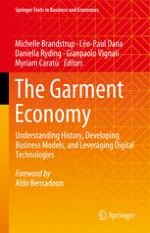The retail industry is highly exposed to the revolutionary changes imposed by the acceleration of digitalisation; it is an inevitable challenge for traditional physical stores in light of online channels continuing to grow and increasing market competition (Biron,
The last decade was devastating for the retail industry. Here’s how the retail apocalypse played out,
https://www.businessinsider.com/retail-apocalypse-last-decade-timeline-2019-12, 2022; Kumagai & Nagasawa, Asia Pacific Journal of Marketing and Logistics, 34:1809, 2021). In response to this situation, it is essential to provide both theoretical and practical research support to help retailers elevate the offline shopping experience and win the heart of customers (Gauri et al., Journal of Retailing, 97:42–61, 2021). An enjoyable shopping experience is identified as a significant factor for consumers to choose physical store shopping over online shopping (Duong et al., Journal of Consumer Marketing, 39:218–229, 2022). More importantly, consumers’ passion and need for the physical store experience are not eliminated in the last decade (Creswell, The incredible shrinking sears (Published 2017), Nytimes.com, 2017; Kumagai & Nagasawa, Asia Pacific Journal of Marketing and Logistics, 34:1809, 2021; Mintel, Beauty and personal care retailing—UK—2022: Consumer market research report | Mintel.com, 2022; PwC, Total retail survey: 10 retailer investments for an uncertain future,
https://www.pwc.com/gx/en/industries/assets/total-retail-2017.pdf, 2017). Even after COVID-19, when online shopping became compulsory during the period of lockdown, nearly half of the shoppers stated that they still prefer to shop cosmetics in the physical store, due to their ability to feel the product in real life (Eroglu et al., Journal of Retailing and Consumer Services 64:102760, 2022; Mintel, Beauty and personal care retailing—UK—2022: Consumer market research report | Mintel.com, 2022; Wang et al., Frontiers in Psychology, 12:829696, 2022). Prior research on the physical store experience has concentrated on the influence of store atmosphere; sensory marketing; on the other hand, has been shown in recent studies to be important in providing a better consumer shopping experience (Duong et al., Journal of Consumer Marketing, 39:218–229, 2022; Shahid et al., Psychology & Marketing, 39:1398, 2022). Using sensory marketing to engage the customer through five sensations (visual, sound, smell, touch, and taste) is the unique advantage of physical store compared to online shopping; organisations could create an emotional bond between consumer, products, and services, rather than on a rational level only (Biswas, Journal of Retailing, 95:111–115, 2019; Hultén, Sensory Marketing, 1–23, 2015; Hultén et al., Sensory Marketing, 1–23, 2009; Hussain, International Journal of Management Studies, 2:32, 2018; Roy et al., Journal of Marketing Management, 36:299–333, 2020; Shahid et al., Psychology & Marketing, 39:1398, 2022; Yoganathan et al., Journal of Business Research, 96:386–396, 2019). The research aim of this study is to examine the impact of sensory marketing strategies on consumer in-store shopping experience, evaluate, and identify how consumers with different characteristics have different reactions and preferences on sensory marketing strategies. Retailers could provide better physical engagement to create customer value when selling deep products – that require ample inspection to make an informed decision (Zhang et al., Journal of Marketing, 86:166–185, 2021). Physical encounters are intimately linked to an individual’s five senses; using sensory marketing to engage them is the unique advantage of in-store experience compared to online shopping (Reid et al., International Journal of Business and Globalisation, 17:364–383, 2016; Vignali et al., International Journal of Business and Globalisation 13:387–418, 2014; Vignali & Reid, Technology driven sustainability: Innovation in the fashion supply chain, Springer, 2014); organisations could create an emotional bond between consumers, products, and services, rather than on a rational level only (Biswas, Journal of Marketing, 56:57, 2019; Hultén, Sensory marketing, Routledge, 2015; Krishna, Customer sense—how the 5 senses influence buying behavior, Palgrave Macmillan, 2013; Kumagai & Nagasawa, Asia Pacific Journal of Marketing and Logistics, 34:1809, 2021; Labrecque, Psychology & Marketing, 37:1013–1018, 2020). Especially for luxury stores, which promise a sensorial shopping experience (Joshi & Garg, International Journal of Consumer Studies, 45:259–272, 2021), the multisensory dimension serves as an integral feature of luxury brands and their related strategies (Shahid et al., Psychology & Marketing, 39:1398, 2022).
